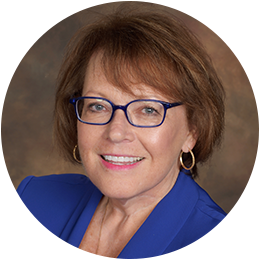
I’ve been very fortunate to have been part of the evolution of changes that have impacted the roles of MSPs (Medical Services Professionals) during my career. And - the changes keep coming! As I’ve been preparing for presentations this fall at the NAMSS CVO Conference (October 3) and at the VerityStream Health System CVO Forum (November 6) and the 2018 VerityStream National User Group Conference (November 7-8), I’ve been thinking a lot about the current changes that challenge MSPs to meet new expectations and roles.
One of the changes that I see coming is centralization of the decision-making process in health systems. What does this mean? In some organizations, the support for the decision-making process for credentialing/privileging (typically a department chair, the credentials committee, the medical executive committee and the board) is being centralized, rather than being supported by a medical staff office at each facility. This change is at the beginning stages and has started to emerge as a result of several factors:
1. Technology now facilitates management of the decision-making process electronically. When an electronic file is ready for evaluation and a recommendation, department chairs do not have to appear physically in a medical staff office or credentialing department. The file can be made accessible to them electronically and they can review and make their recommendation electronically as well. Additionally, the credentials committee can have access to the electronic file (as well as view the recommendation of the department chair) – and so can the medical executive committee and board.
2. Some health systems have standardized their privileges across all facilities that must privilege. When this occurs, the support for creating privilege delineations is typically centralized, rather than being at each facility (too expensive and not conducive to standardization).
3. When privileges have been standardized, the next logical step is to put in place some type of a system credentials committee.
4. Health systems frequently have one board to which all credentialing and privileging recommendations are made. These boards do not want to make disparate privileging decisions. If a physician is competent and qualified to exercise a privilege at one facility, they don’t want to deny that privilege at another facility.
5. Health systems are evaluating their decision-making processes. When there are a number of facilities that are in close geographic proximity and many providers have privileges at multiple facilities, it no longer makes sense for each facility to make credentialing/privileging recommendations in isolation. There may be the concept of the primary department chair making a recommendation on behalf of several facilities, a system credentials committee making a recommendation to various MECs rather than each facility having their own credentials committee, etc. In many cases, it is the physicians who want this streamlining of the decision-making process. They are tired of duplicative activities and don’t have time to attend what they may view as extraneous committee meetings.
Will these changes impact your organization today? Within the next few months? Next year? You know your organization better than I do – but I will say that I see all the signs that changes in the way that the credentialing/privileging decision-making process is supported and structured will be experienced in many health systems over the next months and years.
When I worked in hospitals, I very much enjoyed the experience of working with physicians leaders – sitting down with them and reviewing a patient record (for peer review purposes) or a credentials file (to assist them in making a recommendation). Those days are long gone for many physician leaders and MSPs. Physicians need to be as productive as possible and when they take on a leadership position, they need to be able to perform their leadership responsibilities efficiently. The more than we can help them do their work in an efficient way – and when it is convenient for them to do their work, the happier they will be. We need their input – they need us to help them work efficiently.
I hope to see many of you at the conferences I referenced at the beginning of this Consulting Connection – and we will continue the discussion about coming changes and how those changes will impact all of us.
